River Bank Garden Ideas: Create Your Serene Waterside Haven
Are you thinking about creating beautiful garden spaces along a river bank? River bank gardening can enhance the natural beauty of the area while also helping to prevent erosion and support local wildlife.
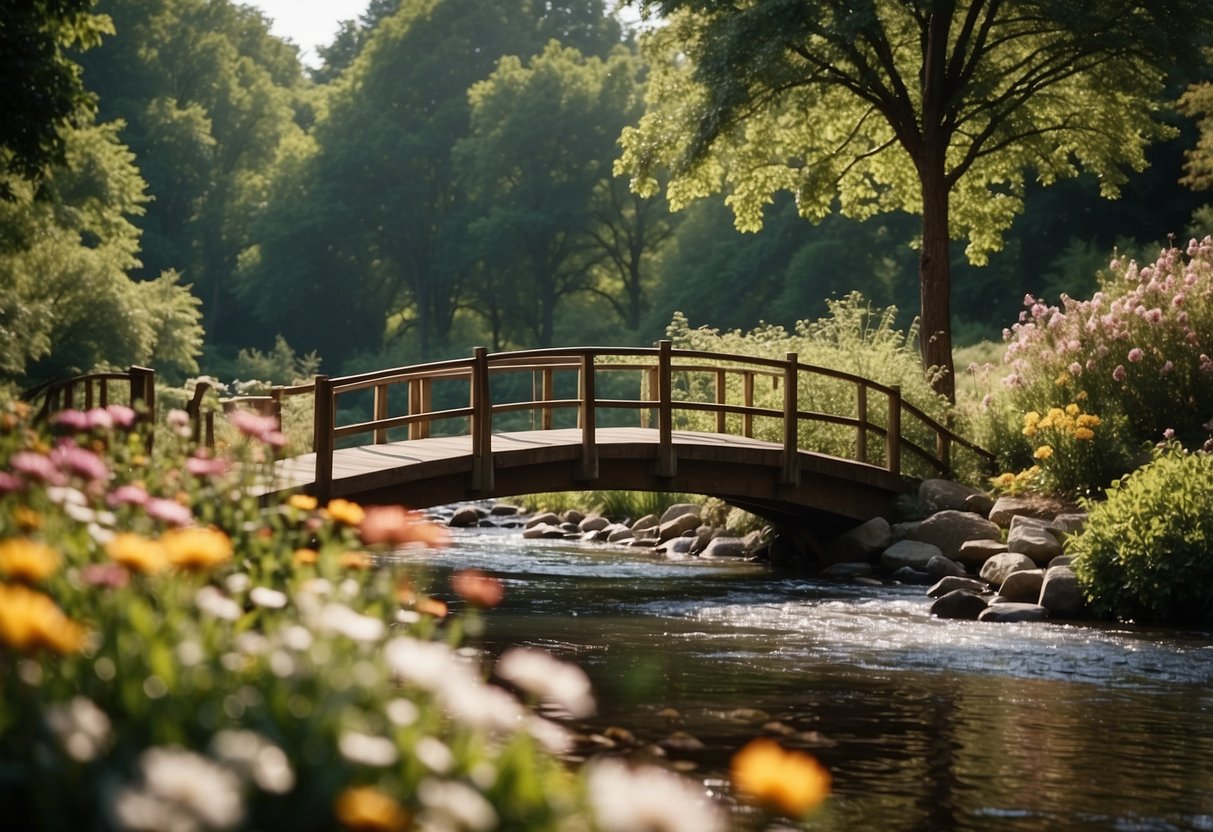
By choosing the right plants and design elements, you can transform your river bank into a lush and vibrant landscape. Whether your goal is to create a peaceful retreat or a lively garden full of color, you have plenty of options to explore.
1) River’s Edge Wildflower Sanctuary
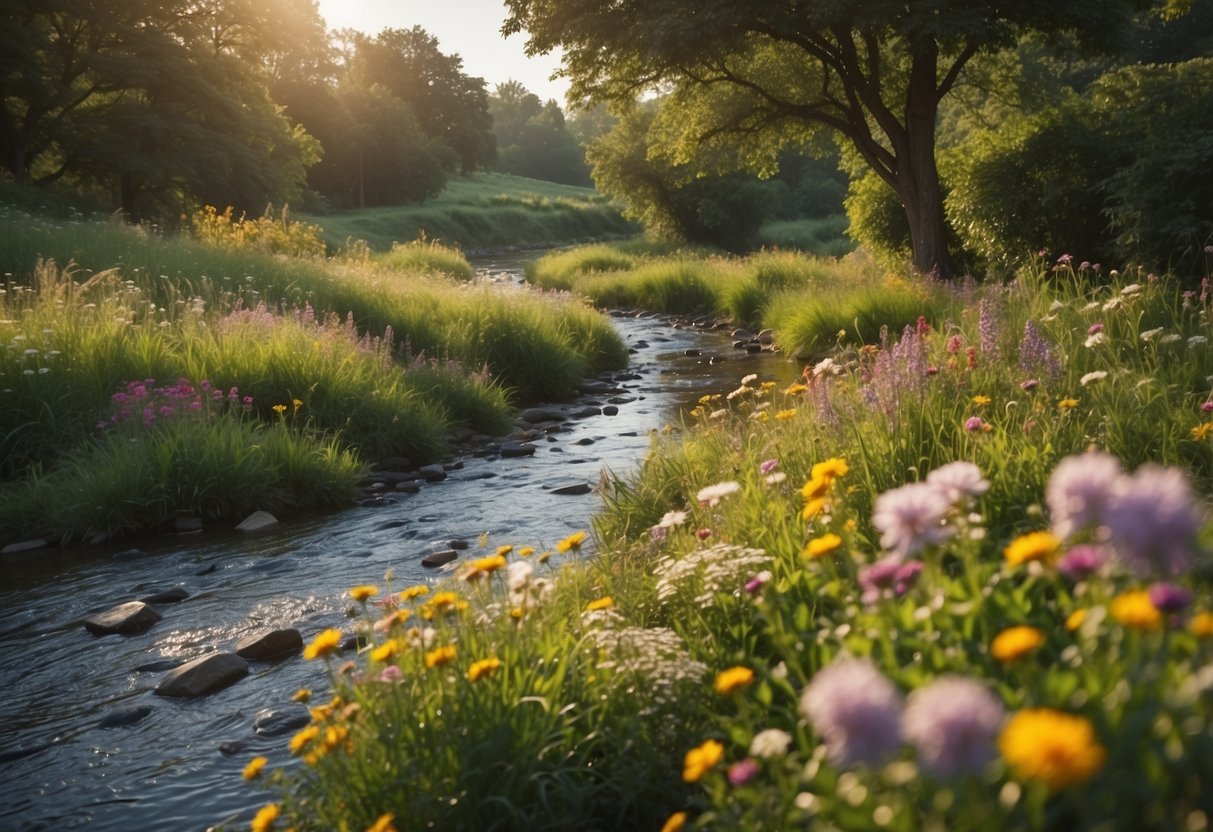
Picture a sanctuary brimming with colorful wildflowers right by the river’s edge. It’s a haven for pollinators and a visual treat for anyone passing by.
Choose wildflowers that thrive in moist soil. Think purple coneflower, butterfly weed, and marsh marigold. Their bright blooms will attract bees and butterflies.
Incorporate a mix of grasses and groundcovers to prevent erosion. This will also create a lush, seamless appearance for your wildflower sanctuary.
2) Stone Pathway Oasis
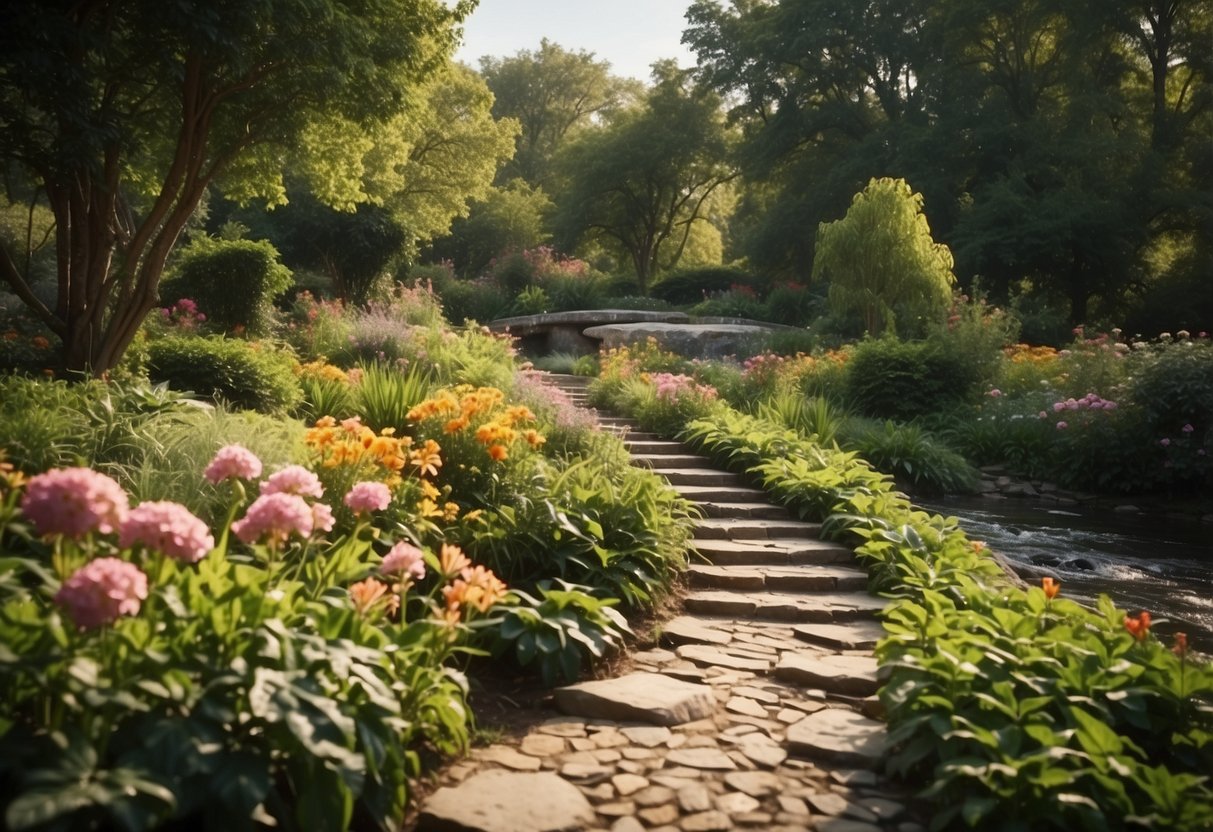
Create a serene atmosphere in your garden with a stone pathway. Use river rocks to design a natural, winding path that guides visitors through lush greenery.
The stones can be arranged in a random pattern or neatly lined up. Add small boulders and clumping grasses to enhance the look.
Intersperse the pathway with colorful flowers or evergreen shrubs to provide contrast and visual interest. A stone pathway is not only beautiful but also low-maintenance.
3) Willow Tree Hammock Retreat
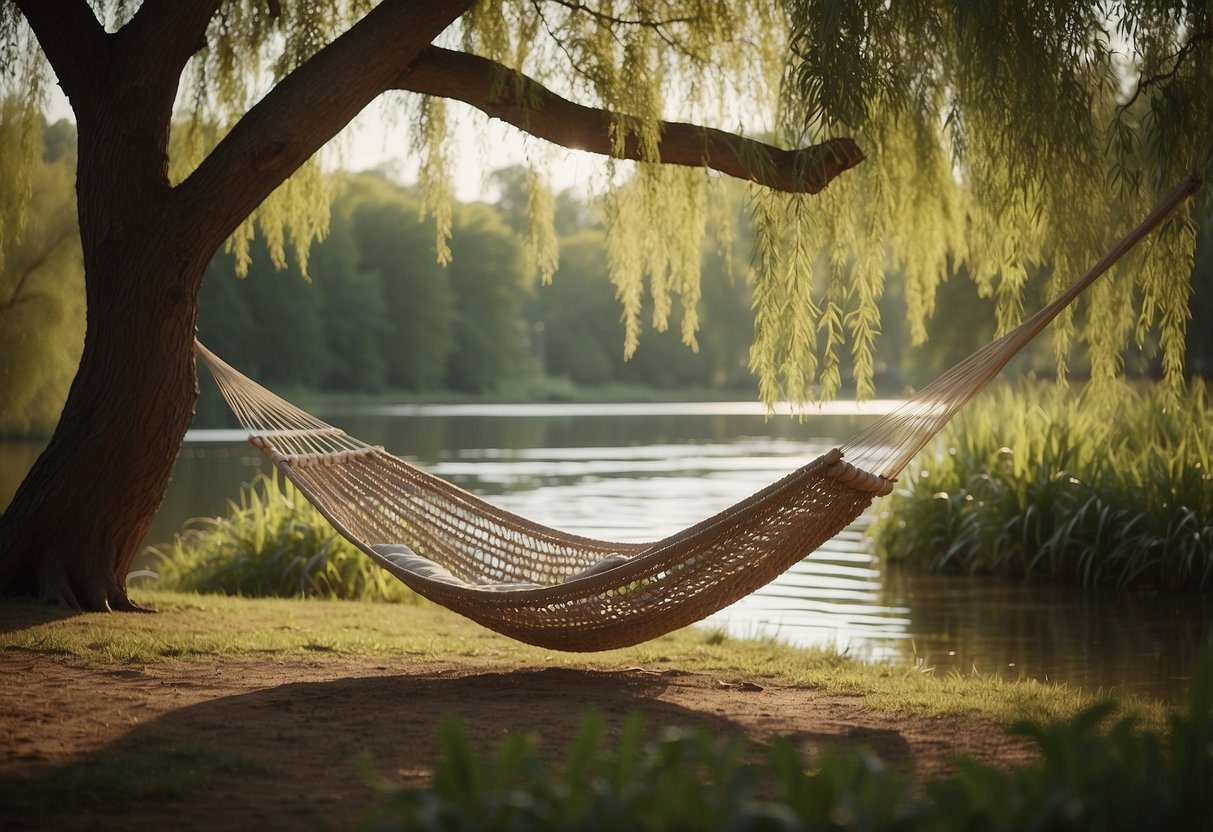
Imagine setting up a hammock under a graceful willow tree by the river bank. The long, drooping branches provide a natural canopy, creating a peaceful, shady spot for you to relax.
The gentle rustling of the willow leaves and the soft sounds of the river can help soothe your mind. You can find some great hammock ideas to make this space even more inviting.
A willow tree hammock retreat offers you a perfect blend of nature and comfort. You’ll love spending lazy afternoons there, surrounded by the tranquil beauty of your garden.
4) Serenity Pond with Lily Pads

Creating a serenity pond with lily pads can turn your river bank garden into a peaceful escape. Lily pads add a touch of natural beauty. They float gently on the water, offering a sense of calm.
Besides their beauty, lily pads provide shade for fish. They help keep the water cool and healthy. For more ideas on lily pad ponds, you can explore these captivating designs.
Adding stones around the pond improves its look. Combined with the lily pads, stones create a harmonious design. Mother Nature would definitely approve!
5) Waterfall Rock Garden

A waterfall rock garden brings a peaceful touch to your river bank. The sound of water flowing over rocks creates a soothing atmosphere.
Use a mix of large and small river rocks to build the waterfall. Natural stones help it blend into the garden.
Consider adding plants around the waterfall to enhance its beauty. Choose plants that thrive near water for the best results.
For inspiration on designing your own waterfall rock garden, you can explore various river rock waterfall ideas.
6) Native Grasses Border

Adding native grasses to your river bank garden creates a lush and natural border that attracts wildlife. The seeds from these grasses provide food for birds like sparrows and finches.
Native grasses also support a wide range of insects, including butterflies and grasshoppers, which are important for the ecosystem.
Consider grasses like switchgrass or Indian grass. These native plants not only enhance the beauty of your garden but also contribute to its health and vitality by supporting local wildlife.
7) Floating Flower Beds
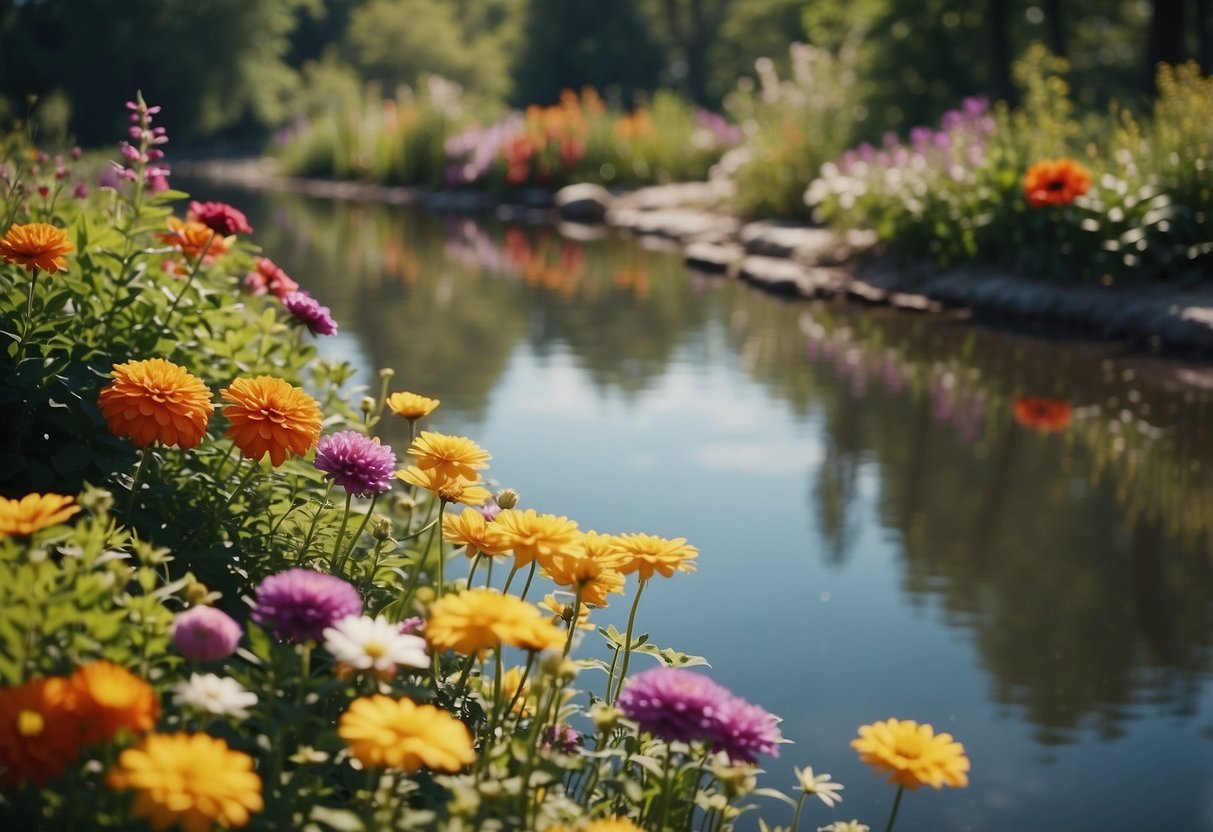
Floating flower beds are a unique way to enhance the natural beauty of your river bank garden. These beds rest on the water, creating a serene and picturesque scene.
You can use lightweight materials like foam or plastic to make the floating base. Then, add soil and plants on top.
Choose water-friendly plants, like water lilies or irises, to thrive in these mini gardens on the water. This setup not only looks beautiful but also supports local wildlife.
8) Butterfly Attracting Plants
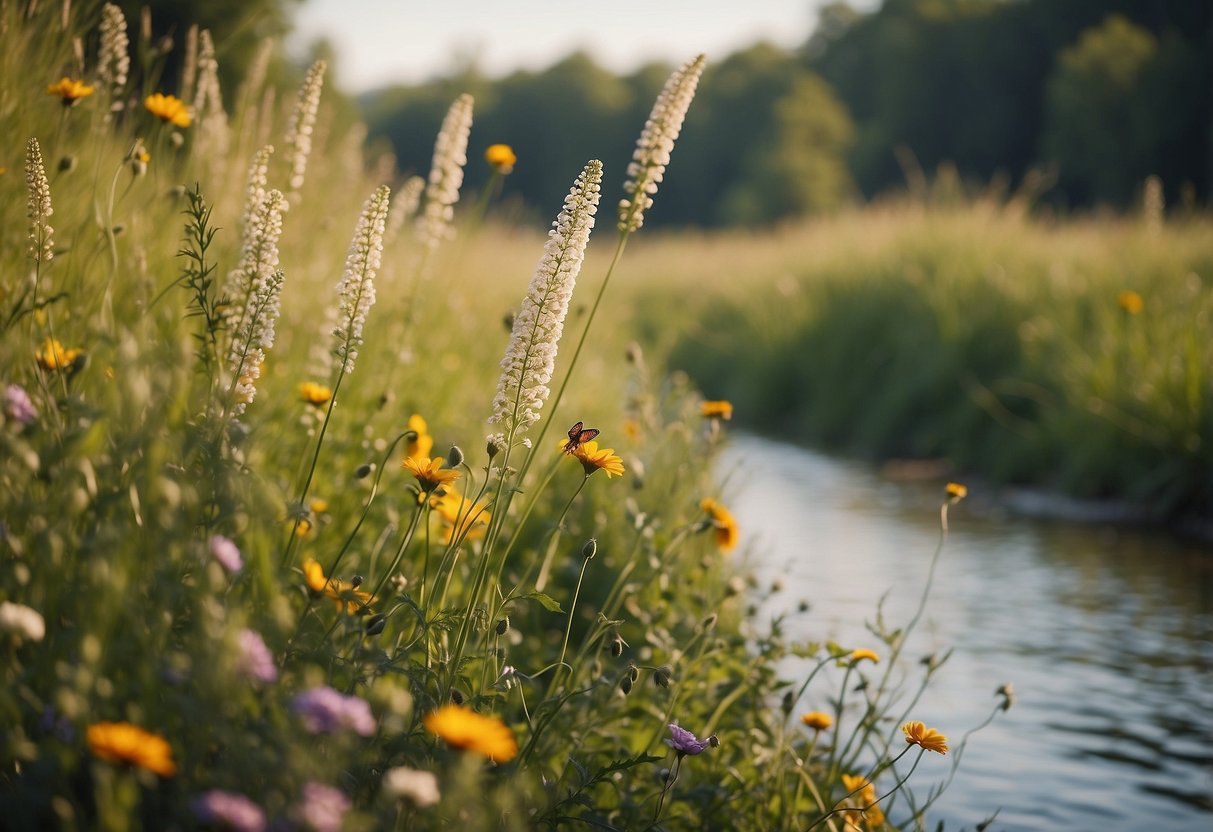
You can add plants that attract butterflies to your river bank garden.
Clover is a host plant for several butterfly species. Its trifoliate leaves feed caterpillars, and its flowers provide nectar. Plus, it’s easy to grow and improves soil fertility.
Bee Balm has tubular, nectar-rich flowers. They attract a wide range of butterflies and are low maintenance.
Geraniums add fragrance and color. Their blooms in red, pink, purple, and orange bring butterflies to your garden.
Some varieties of Passionflower vine are excellent for attracting the gulf fritillary butterfly. They thrive in zones 7-10.
9) Herb Spiral Garden
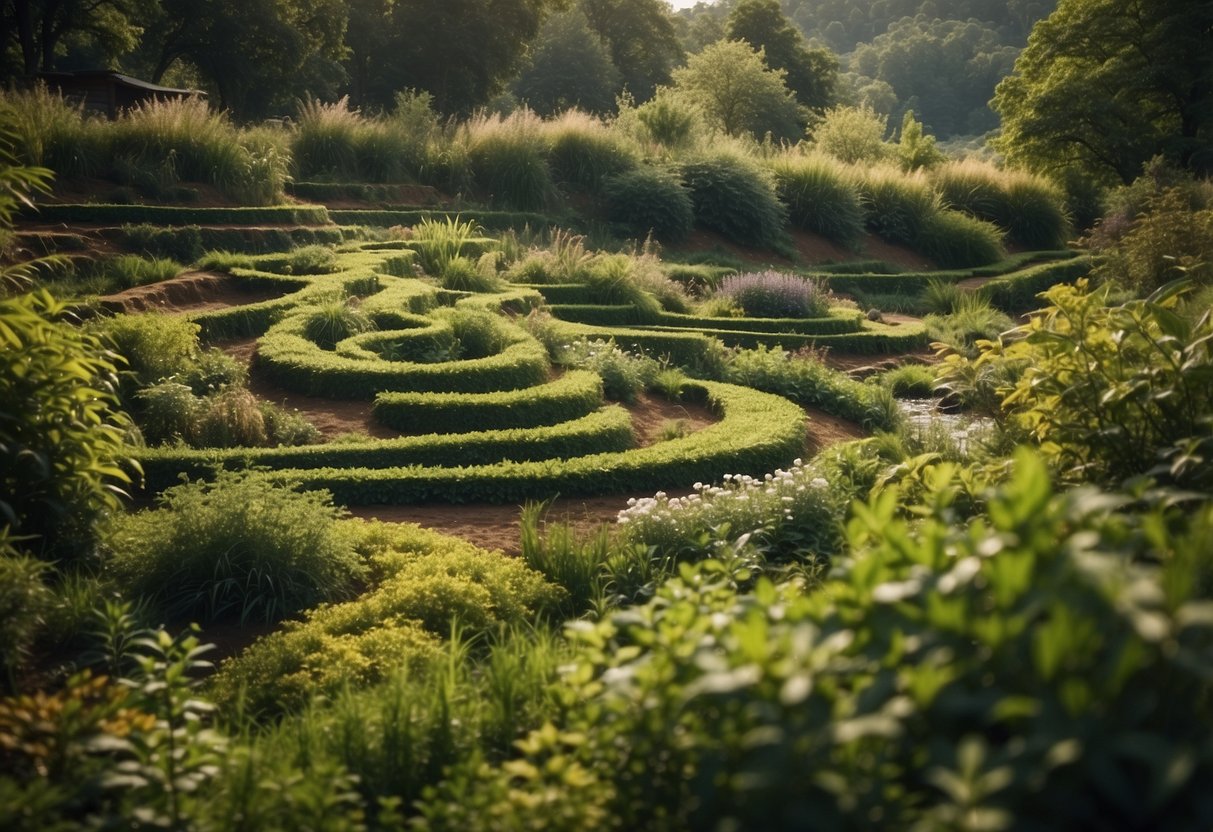
A herb spiral garden is a fun and unique idea for your river bank. It’s a raised bed built in a spiral shape, taller in the middle and going down to ground level. You can use stones or wood to form the spiral.
This type of garden is great for growing a variety of herbs. Each section of the spiral gets different amounts of sun and moisture, which is perfect for different herbs. Plus, it’s visually appealing and makes good use of space.
Building it is easy and can be a great weekend project. Learn more about it here.
10) Rustic Wooden Benches
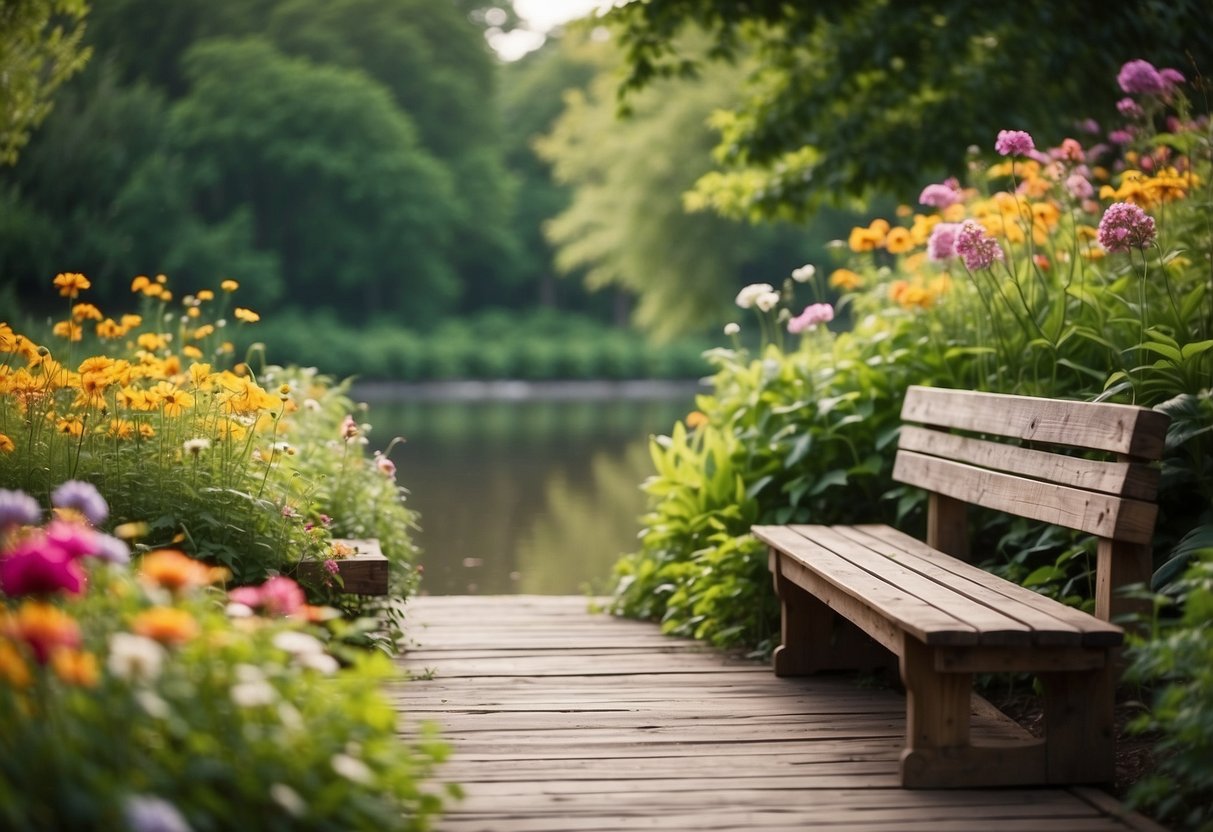
Rustic wooden benches can add charm and character to your river bank garden. They blend well with natural surroundings and provide a great spot to relax.
You can build a bench using reclaimed wood or logs. This adds a unique and personal touch to your space. Check out these DIY rustic log and reclaimed wood garden bench ideas.
Placing these benches near the water, surrounded by greenery, creates a peaceful sitting area.
Starting Your River Bank Garden

When starting your river bank garden, it’s important to focus on choosing appropriate plants and preparing the soil correctly. These steps will ensure healthy growth and help manage erosion.
Choosing the Right Plants
Selecting the right plants for your river bank garden is essential. Opt for plants that thrive in wet conditions. Good options include black chokeberry, running serviceberry, rhododendron, and marsh marigold. These plants are well-suited for river banks and help stabilize the soil.
Groundcovers can also help with erosion control. Mountain laurel and Virginia sweetspire are excellent choices. They spread quickly and create a lush, green cover. You might also consider alpine currant, which is hardy and adaptable.
Soil Preparation Tips
Proper soil preparation is key to a successful river bank garden. First, assess the soil’s drainage. River banks can have sandy or clay soils, each needing different treatments. For sandy soils, add organic matter like compost to retain moisture. For clay soils, add sand and compost to improve drainage.
Before planting, remove any weeds. You can lay down a layer of mulch to suppress weed growth and retain moisture. Mulch also helps prevent soil erosion during heavy rains. Consider using natural materials like wood chips or straw.
Keep the soil moist, especially during the early stages. Consistent watering helps plants establish strong roots. Your garden will then withstand varying weather conditions and thrive along the river bank.
Design and Layout Ideas

Creating a river bank garden can offer a serene and natural look to your outdoor space. Focusing on pathways and water features can significantly enhance its appeal.
Creating Natural Pathways
Natural pathways in your garden can lead guests through your landscape in an organic, inviting way. Utilize river rocks, which are smooth and rounded, to line the paths. This not only looks attractive but also feels nice underfoot.
Consider adding a mix of river rock gravel and small boulders for texture. For more visual interest, you can edge pathways with different types of plants, like clumping native grasses. These grasses are low-maintenance and can thrive in various conditions.
Introducing curves instead of straight lines makes the paths look more natural. You might also add stepping stones to create a varied walking experience. Think about lighting as well; soft garden lights along the path can create a magical atmosphere at night.
Incorporating Water Features
Water features bring tranquility and a soothing vibe to any garden. A flowing stream or a small pond can be designed to fit even compact spaces. Use a combination of river pebbles and larger rocks to mimic the flow of a gentle stream, creating a meandering feel through your yard.
Consider a pebble-enhanced riverbank design that uses pebbles to simulate flowing water. Pair these with diverse plants that can handle wet conditions, like ferns or hostas.
Adding a small waterfall can amplify the calming sound of water. If space allows, a pond with fish and aquatic plants can add life to the garden. You might also use a birdbath or a fountain as a simpler water feature. These elements can attract birds and insects, bringing more natural life into your garden.
Maintenance and Care
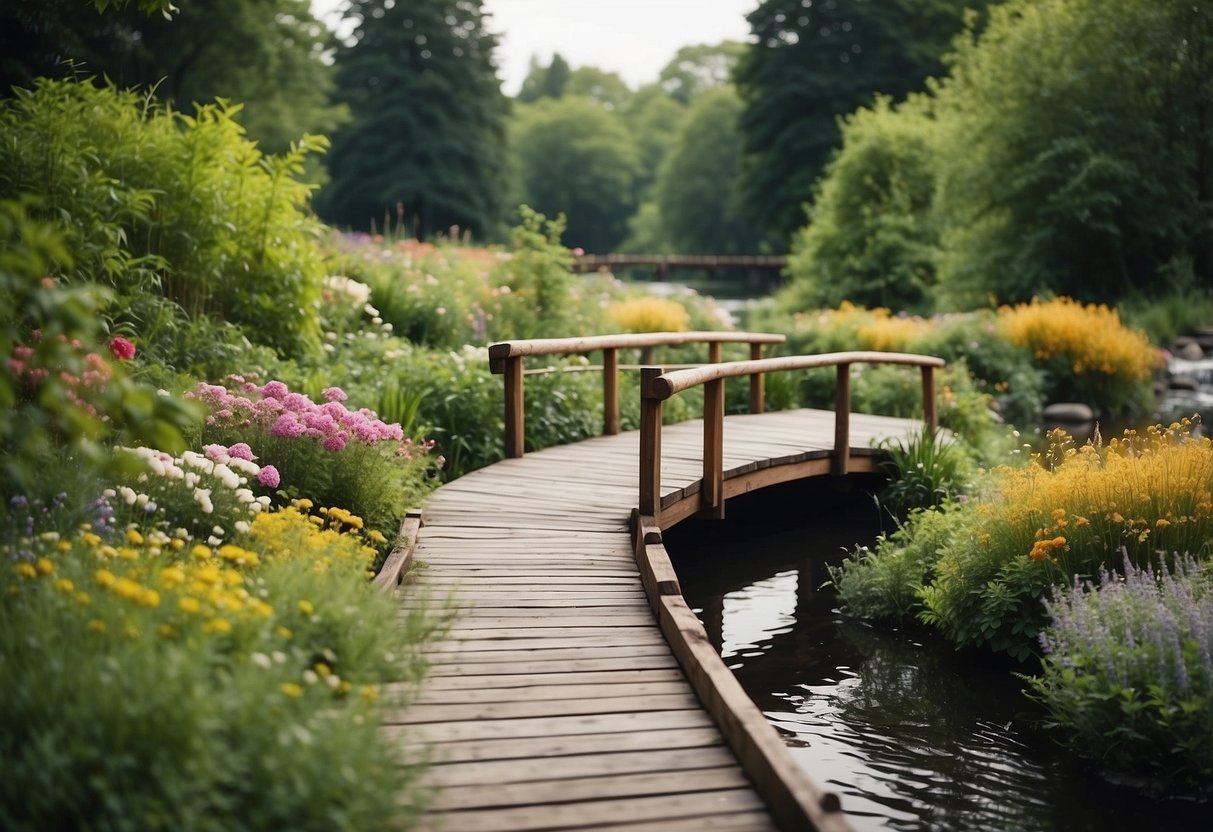
To keep your river bank garden thriving, focus on seasonal gardening tasks and strategies to prevent soil erosion. Proper maintenance can help ensure a healthy and beautiful garden year-round.
Seasonal Gardening Tips
In spring, you should focus on planting new native plants that are well-suited for river banks. These plants can help stabilize the soil and reduce maintenance. Prune any dead or damaged branches from shrubs and trees to encourage new growth.
During summer, water your garden regularly, especially during dry spells. A mulch layer helps retain moisture and keep the roots cool. Keep an eye out for pests and diseases and address them promptly to prevent spread.
In fall, it’s a great time to plant bulbs and divide perennials. Remove any fallen leaves or debris to prevent rot and disease. Mulching again can protect plant roots from winter cold.
Winter requires less active gardening, but you can check for any erosion or damage after storms. Prune dormant plants and remove any dead growth to prepare for the next growing season.
Preventing Erosion
Erosion is a common issue for river bank gardens. To reduce erosion, use plants with deep root systems like ornamental grasses and shrubs. These roots help anchor the soil effectively.
Create a buffer zone by planting groundcovers that spread quickly. This helps cover exposed soil and reduces runoff. Mulching also adds a protective layer to the soil, slowing down water flow and increasing absorption.
Consider installing terraces or retaining walls on steep slopes. These structures can help manage water flow and keep soil in place. Regularly check these areas for any signs of erosion and address them immediately to prevent further damage.







